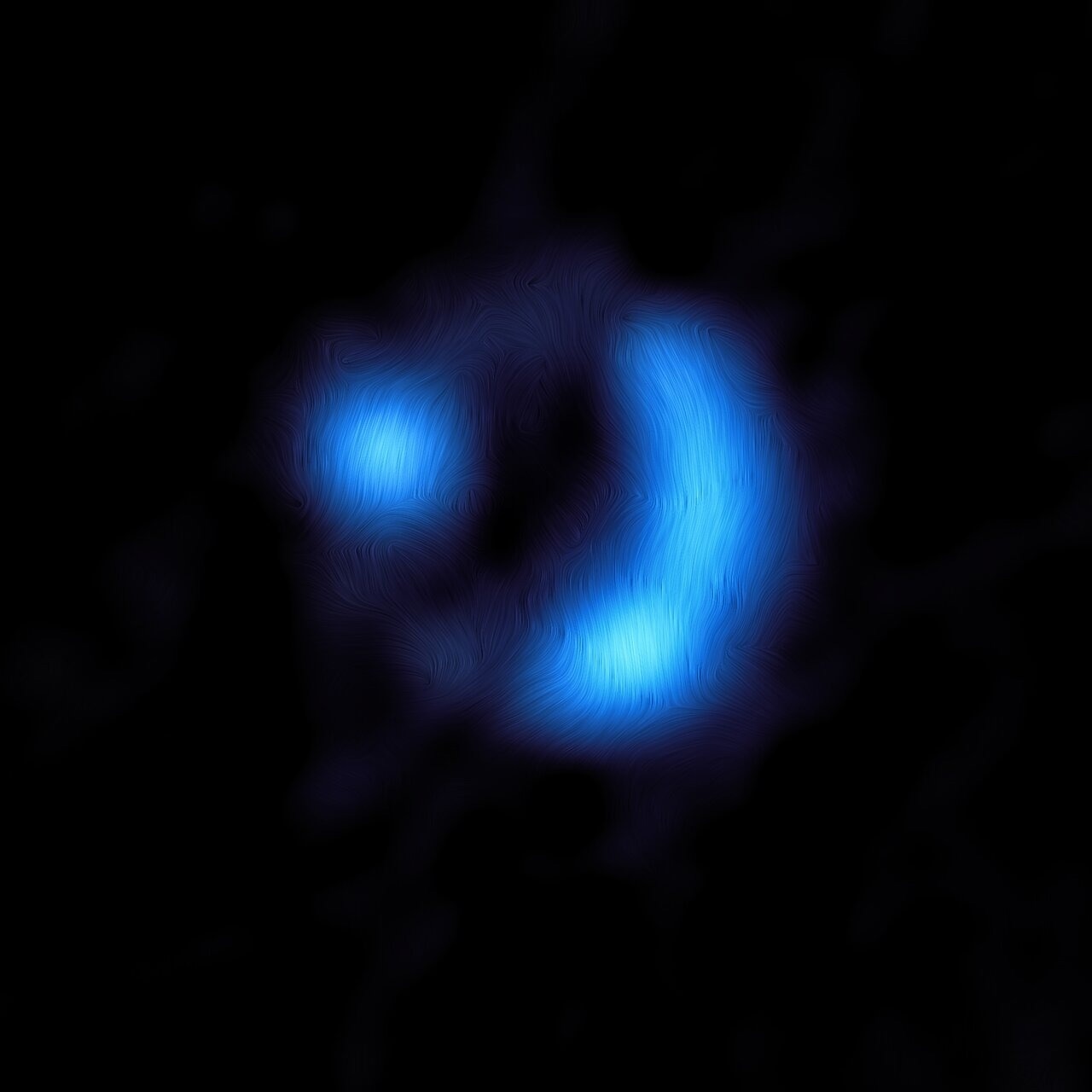Making use of the Atacama Large Millimeter/submillimeter Array (ALMA), astronomers detect the magnetic field of a galaxy that is so distant that its light has taken over 11 billion years to reach the Earth: one gets to see it when the Universe was only 2.5 billion years old.

ALMA view of the 9io9 galaxy. Image Credit: European Southern Observatory
The study outcome offers astronomers vital clues regarding how the magnetic fields of galaxies, like the Milky Way came into existence.
Numerous astronomical bodies present in the Universe consist of magnetic fields, whether stars, planets, or galaxies.
Many people might not be aware that our entire galaxy and other galaxies are laced with magnetic fields, spanning tens of thousands of light-years.
James Geach, Study Lead Author and Professor, Astrophysics, University of Hertfordshire
Geach is the lead author of the study reported recently in the journal Nature.
We actually know very little about how these fields form, despite their being quite fundamental to how galaxies evolve.
Enrique Lopez Rodriguez, Researcher, Stanford University
Also, Rodriguez has taken part in the study.
It is yet to be clear how early in the lifetime of the Universe and how rapidly magnetic fields present in galaxies develop, since so far astronomers have just mapped magnetic fields in galaxies that are present close to us.
Now, making use of ALMA, in which the European Southern Observatory (ESO) is a partner, Geach and his team have found a completely developed magnetic field in a distant galaxy, which is similar in structure to what is noted in nearby galaxies.
The field is around 1000 times weaker compared to the magnetic field of the Earth but extends over more than 16,000 light-years.
This discovery gives us new clues as to how galactic-scale magnetic fields are formed.
James Geach, Study Lead Author and Professor, Astrophysics, University of Hertfordshire
Noting a completely developed magnetic field this early in the history of the Universe denotes that the magnetic fields spanning entire galaxies could develop quickly while young galaxies are continuing to grow.
In the early Universe, the team hopes that intense star formation could have played a role in expediting the development of the fields. Furthermore, these fields could, in turn, impact how later generations of stars will be developed.
Co-author and ESO astronomer Rob Ivison states that the discovery sets the stage for “a new window onto the inner workings of galaxies because the magnetic fields are linked to the material that is forming new stars.”
For this detection to be made, the research group searched for light liberated by dust grains present in a distant galaxy, 9io9. Galaxies have been packed full of dust grains, and when a magnetic field is present, the grains are all set to arrange, and the light they emit becomes polarized.
This implies that the light waves oscillate together in a preferred direction instead of happening randomly. When ALMA detected and mapped a polarized signal that was coming from 9io9, the existence of a magnetic field in a highly distant galaxy was verified for the first time.
No other telescope could have achieved this.
James Geach, Study Lead Author and Professor, Astrophysics, University of Hertfordshire
The belief is that with this and future observations of distant magnetic fields, the puzzle of how such basic galactic features develop will begin to untangle.